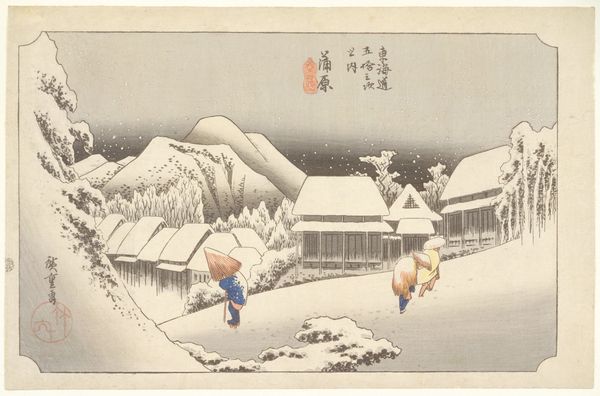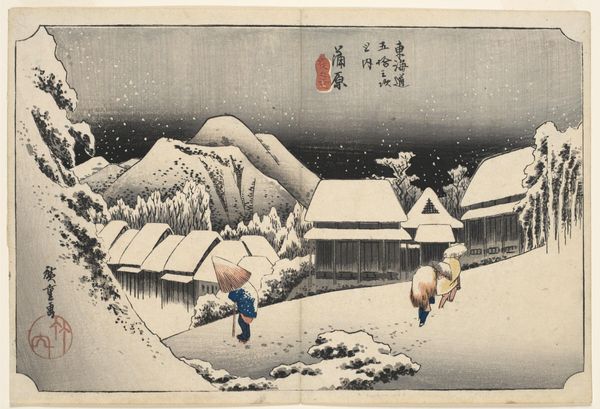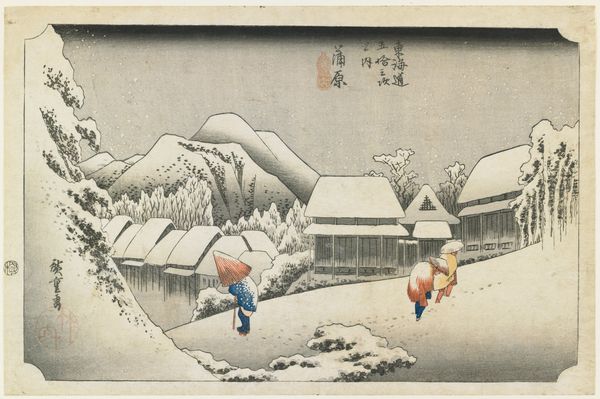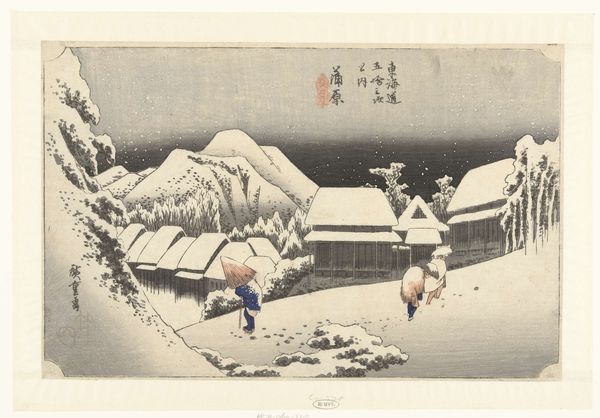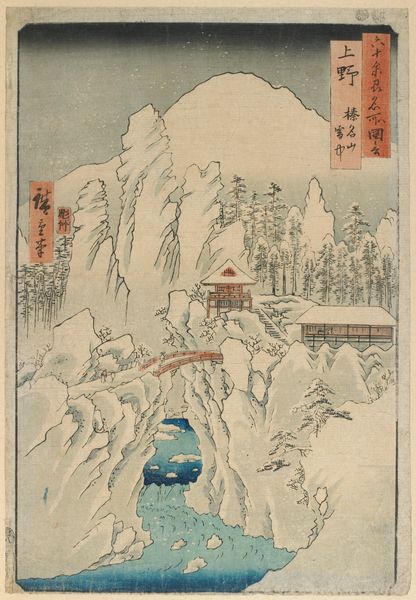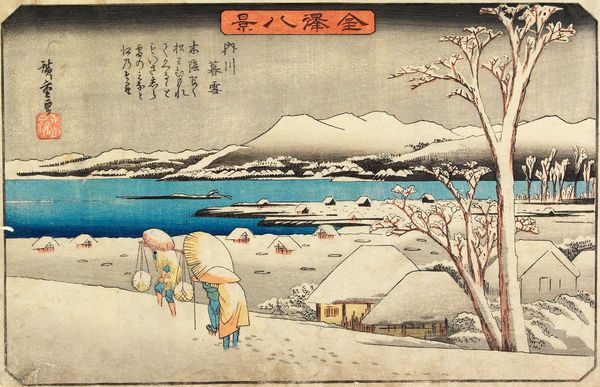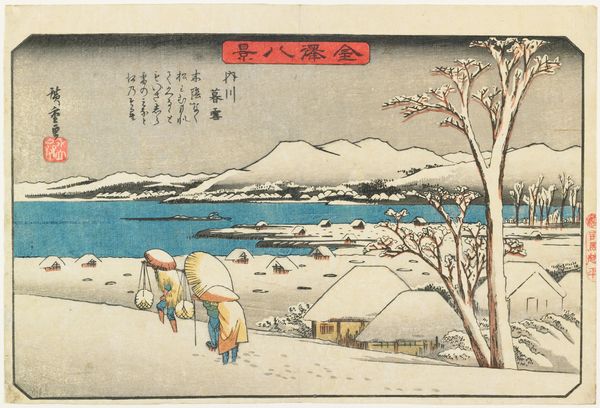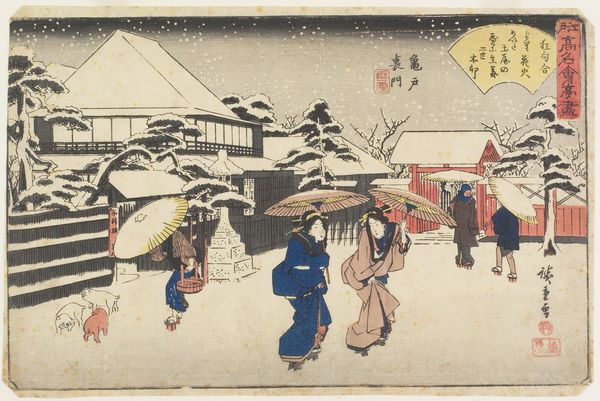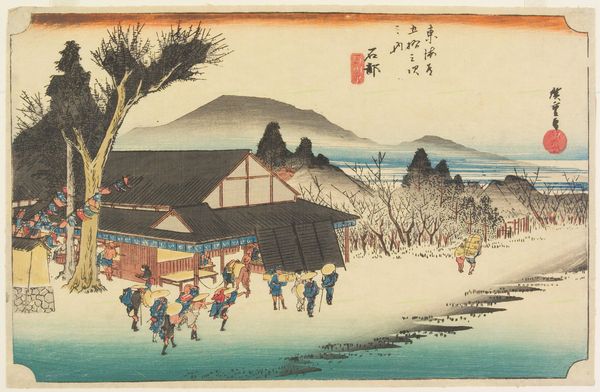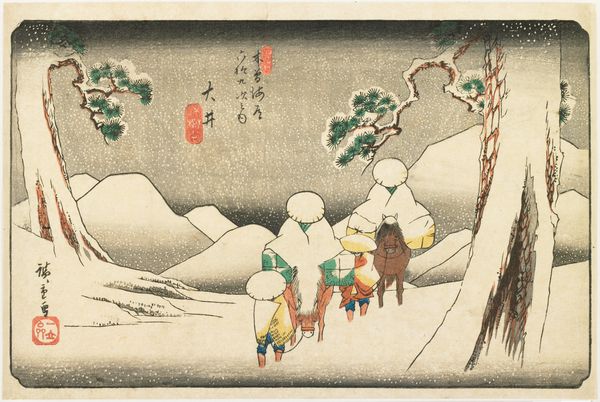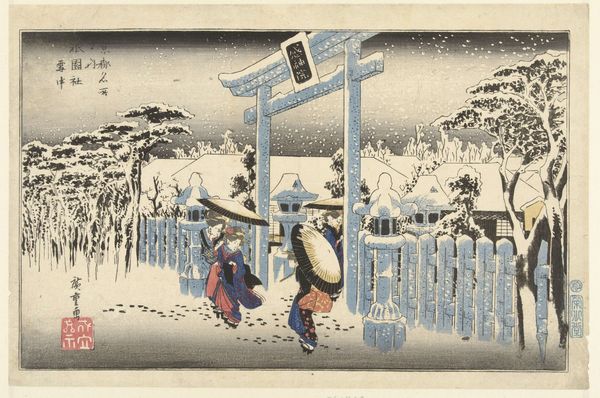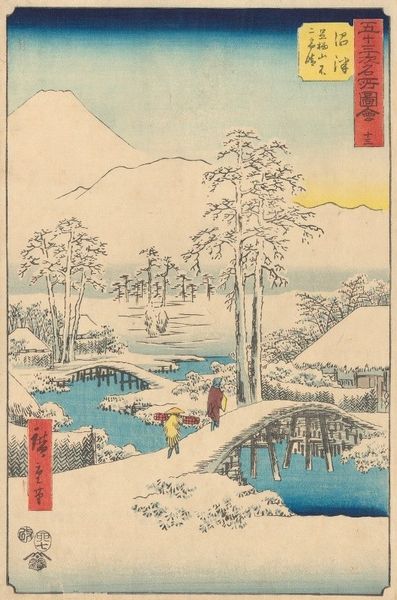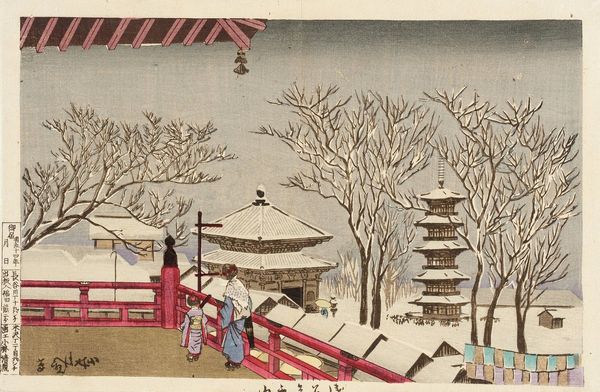
Dimensions: height 90 mm, width 141 mm
Copyright: Rijks Museum: Open Domain
Curator: Utagawa Hiroshige's "Kambara," created in 1906, offers a serene yet stark portrayal of a snow-laden village, part of his series depicting the fifty-three stations of the Tokaido road. The print is currently housed in the Rijksmuseum. Editor: My first impression is one of quiet desolation. The monochromatic palette, punctuated only by touches of blue and ochre, creates a sense of hushed isolation, perfectly capturing the bite of a winter landscape. Curator: Precisely. The use of a woodblock print medium emphasizes the stark simplicity, with each line and form reduced to its essence. Note the carefully calibrated tonal gradations—achieved through meticulous layering of ink—that depict the falling snow and imbue the scene with atmospheric depth. Editor: And think about the laborious process. Each color would require a separate block, meticulously carved. The very material of the wood bears witness to the slow, repetitive nature of labor embedded within the aesthetic object itself. Curator: Certainly. This approach to artmaking informs our reading. Consider the composition; the artist positions the viewer at a remove, encouraging contemplation through distance. Editor: From a materialist lens, one also has to examine consumption of such images. Prints like this allowed the masses to participate in appreciation and ownership. We cannot ignore who owned such prints, or the marketplace and commodification intrinsic to Ukiyo-e. Curator: Indeed, the socio-economic context adds a new layer to interpreting this iconic image. Now looking at form, the negative space around the figures amplifies their solitude against the broader backdrop. Semiotically, these figures function as both subject and signifier— their existence becomes dependent upon how snow operates here. Editor: I agree, they emphasize their humanity, laboring in adverse circumstances. Yet, to push back a little, that quiet scene becomes louder once the socioeconomic is applied. How often were the individuals represented also consuming that image? Curator: That complexity is exactly what makes “Kambara” endure. Editor: To add to that thought, what an exceptional display of work balancing technical and socio-economic value.
Comments
No comments
Be the first to comment and join the conversation on the ultimate creative platform.
